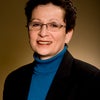
During my recent trip to Annapolis, Maryland, I was inspired by the six ordinary Maryland women who led extraordinary lives and who were inducted into the Maryland Women's Hall of Fame as the class of 2015. They joined over hundred other Maryland women who have made unique and lasting contributions to the economic, political, cultural and social life of the state and to provide role models of achievement for our future women leaders. Match the following inductees into the Maryland Women's Hall of Fame with her accomplishment.
____ 1. The founder of Hadassah, she was instrumental in bringing 11,000 youth to pre-Israel out of Nazi Europe.
____ 2. She determined the cause of "blue baby" syndrome and helped develop the surgical procedure to correct it.
____ 3. The first female electrical engineer to graduate from MIT, her work is used today to evaluate the wires of the electric utility system.
____ 4. A poet, writer, and speaker, she became an ardent abolitionist after Maryland passed a fugitive slave law.
____ 5. In 1648, she went before the assembly to claim two votes as executor of the estate of Governor Leonard Calvert.
A. Margaret Brent
B. Henrietta Szold
C. Frances Ellen Watkins Harper
D. Helen Brooke Taussig
E. Edith Clarke
An early arrival in Maryland (1638), Margaret Brent claimed a land grant and conducted business affairs. Appointed the executor of Governor Leonard Calvert's estate in 1647, Brent's actions are cited as key to the survival of the settlement. In 1648, she claimed two votes before the assembly; this request was denied. After selling some of Lord Baltimore's (the Governor's brother) cattle to settle debts and losing his favor, she and her family relocated to Virginia.
An activist in the abolition and women's rights movements, Frances Ellen Watkins Harper was a poet, writer and speaker. After Maryland passed a fugitive slave law, she became a dedicated abolitionist. Her 1854 book of poetry included one of her most famous works, "Bury Me in a Free Land." An in-demand lecturer, she toured the circuit for two years. In 1859, she became the first African-American to publish a short story. A co-founder of the National Association of Colored Women, Harper continued to work for women's suffrage throughout her life.
The founder of Hadassah, Henrietta Szold was born and attended school in Baltimore. In 1909, she and her mother took a trip to Palestine; a trip that would change the direction of her life. Motivated to change the poverty and social problems that she had seen on her trip, in 1912, she founded Hadassah. This organization changed medical, educational and social situations for the residents. She was instrumental in bringing 11,000 youths out of Nazi Europe to pre-Israel. Szold, who lived her life according to the phrase "make my eyes look toward the future," has been inducted into the National Women's Hall of Fame.
The first female engineer to receive a degree from MIT (1919), Edith Clarke developed the foundational analysis tools used to evaluate the wires (called transmission) in the electric utility industry today. Clarke's mathematical models resulted in papers and books. She was the first woman to present a paper before what today is called the Institute of Electrical and Electronics Engineers and the first woman fellow of that organization. After working for General Electric for 26 years, she became the first female electrical engineering professor at the University of Texas at Austin (1945).
Cardiologist Helen Brooke Taussig studied at Johns Hopkins as Harvard Medical School was not accepting women. She resolved to do something about the "blue babies" that she saw in her practice. Her research revealed the cause of this malady and she proposed the surgical procedure to fix it. The first baby to benefit from the Blalock-Taussig operation had surgery in 1944 -- and turned pink! Characterized as the founder of the field of pediatric cardiology, Taussig received the Presidential Medal of Freedom and has been inducted into the National Women's Hall of Fame.
Learn about more she-roes and celebrate amazing women. All of these ordinary Maryland women who led extraordinary lives are profiled in the book Her Story: A Timeline of the Women Who Changed America. We applaud their accomplishments and are proud to stand on their shoulders.
(answers: 1-B, 2-D, 3-E, 4-C, 5-A)
